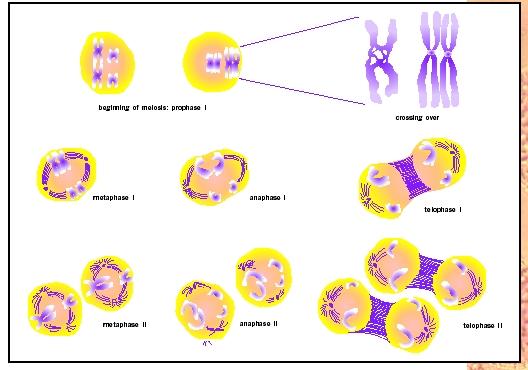On Monday, we saw a simulation about how we live on a street in a city in a state in a country in the earth in the solar system and so on. This is is an analogy for DNA which is in the nucleus which is in the cell which makes up organs which make up organ systems which make up the organism which make up the population.
From this, we learned everything is part of something bigger.
The next day, we learned about codons and furthermore about protein synthesis.
Codons- Triplet nucleotides (bases) that are given for amino acids. These are recognized by the Transfer RNA, or tRNA. They are a part of messenger RNA.
We saw another simulation about protein synthesis that day too.
I learned:
-Ribosomes wait for the RNA, and then the ribosomes pick up the RNA.
Lysosome- Gets the organelles that don't work, out.
Golgi Apparatus- Actually gets it out.
Gets RNA from nucleus, once the ribosome "eats" it, he makes the protein.
The next day, we learned the following things:
- Organisms have to be able to live on their own.
- The cell membrane is like a door because it lets things in and out.
- Molecules contain protein, carbohydrates, lipids and nucleic acids.
- Lipids are fats.
- DNA are the most important nucleic acids.
- The cell membrane is a thin film over the cell.
- Animal cells don't have chloroplasts.
- Prokaryotic cells usual just contain a cell wall, cell membrane, cytoplasm and DNA.
The next day, we were introduced to the new project we were going to be doing about either respiration, photosynthesis, fermentation or protein synthesis. I chose to do mine on protein synthesis, and made a poster. For homework that night, we had to make up an analogy for a cell and it's organelles. Here is what I wrote:
A cell is like a library.
The books are like the nucleus- It holds all of the information, like the books who have information.
The walls are like the cell wall- Helps protect the cell and gives the cell structure, like the walls of the library keep the roof off and keep it isolated from the outside.
The doors are like the cell membrane- They let things in and out, like the door lets people in and out.
The Dewey Decimal System is like the ribosomes- They put the books and place and crack the code for where each book should go, like the ribosomes sort RNA.
The Librarian is like the mitochondria- Just like the librarian does for the library, it gives it energy or knowledge and effort for everything to be in the right place.
The Author is like the Rough Endoplasmic Reticulum- It makes things for the cell to use, like the author makes the books to read.
The Editor is like the Smooth Endoplasmic Reticulum- It takes the bad things out of the body, like the editor does to the books.
We then learned a little bit of further information about fermentation.
Fermentation takes place in the cytoplasm. It makes food such as bread and cheese using yeast. Fermentation is important because it allows cells to meet their energy needs when oxygen is not present.
On Friday, we read from the books and worked on our projects, so I don't have any noted about that.
That is what I learned about this week in science.




